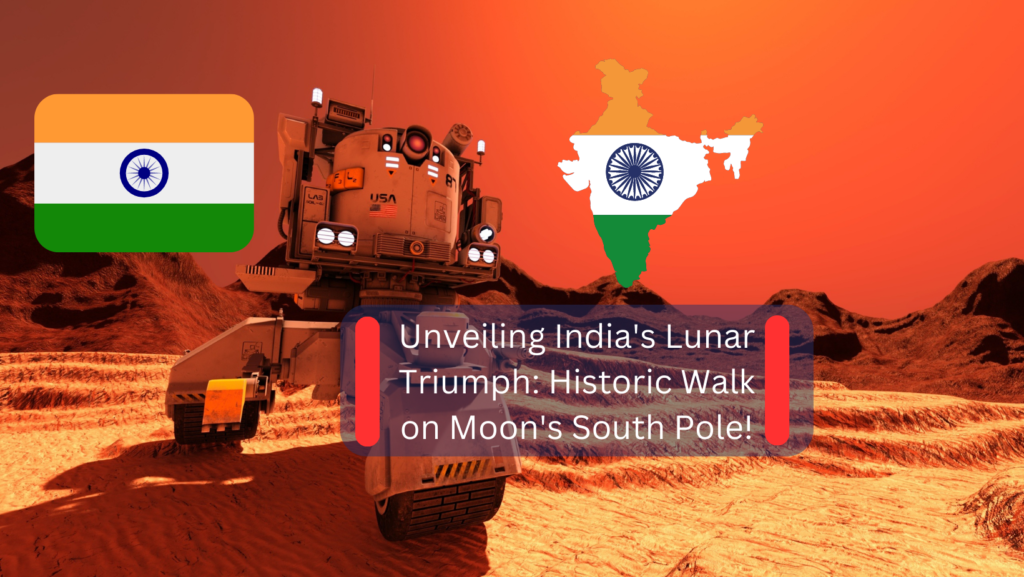As India, along with the rest of the world, celebrates India’s historic achievement of landing on the moon’s surface, many are curious about ISRO’s choice of the Vikram lander for the South Pole landing.

ISRO’s chief, S Somanath, explains the reasoning behind selecting the moon’s South Pole for Chandrayaan-3’s landing, stating, “We have approached the South Pole, which is nearly 70 degrees. The South Pole has a unique advantage of receiving less sunlight. This characteristic offers the potential for more scientific exploration… Scientists working on lunar missions have shown great interest in the South Pole because, ultimately, humans aim to establish colonies and explore further. Therefore, we are seeking the best location, and the South Pole holds that potential.”
Regarding the Aditya L-1 and Gaganyaan missions, the ISRO chief mentions, “The Aditya mission to the Sun is preparing for launch in September. The Gaganyaan mission is a work in progress. We plan to conduct a mission, possibly by the end of September or October, to demonstrate the crew module and crew escape capabilities. This will be followed by several test missions leading up to the first manned mission, expected by 2025.”
Best 100 Shoes for running and walking
On Thursday morning, August 24, ISRO announced that the ‘Pragyan’ rover had successfully rolled out from the ‘Vikram’ lander. The Indian Space Research Organisation confirmed that India took its first steps on the moon’s surface as the rover touched down on the Moon’s south pole.
ISRO’s official post on X (formerly Twitter) read, “Chandrayaan-3 ROVER: Made in India, Made for the MOON! The Ch-3 Rover ramped down from the Lander and India took a walk on the moon! More updates soon.”
Pawan K Goenka, Chairman of INSPACe, also shared a photo of the rover emerging from the lander’s ramp, captioning it as the “First photo of Rover coming out of the lander on the ramp.”
Best 100 Sports and Outdoors products
This achievement follows the successful soft landing of Chandrayaan-3’s Vikram lander on the moon’s south pole, marking a historic moment.
Shortly after the successful landing, Prime Minister Narendra Modi, who was in South Africa at the time, congratulated ISRO’s chief, S Somnath, and his team on this remarkable achievement.
